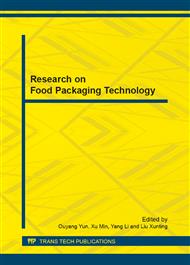p.26
p.30
p.36
p.41
p.46
p.51
p.55
p.59
p.64
Study on Temperature Control Microcapsule Drying Agent Applies to Water-Based Gravure Ink
Abstract:
The water-based gravure ink does not contain volatile organic solvent, which is an environmentally friendly ink. But slow drying is a bottleneck of water-based gravure ink in use. Proposed the water in Water-based gravure ink reacts with temperature control microcapsule drying agent when heated in drying box of gravure printing machine to increase the ink drying speed. Designed preparation purification and drying methodthe of calcium oxide microcapsules, which surface is coated with hydrophobic compound and surfactant. The coating layer of Water-based gravure ink drying agent has good water resistance below 60°C, which will drop from the surface of the calcium oxide in the process of temperature continues to rise. Use the rheometer to test the rheology of water-based gravure ink contain microcapsule drying agent, characterization of the drying effect of the microcapsule drying agent based on the change in viscosity of the ink. Experimental results show that, the excitation temperature of the drying agent is 40°C. The Prepared temperature control microcapsule drying agent can effectively improve the drying speed of the water-based gravure printing ink.
Info:
Periodical:
Pages:
46-50
Citation:
Online since:
November 2013
Authors:
Keywords:
Price:
Сopyright:
© 2014 Trans Tech Publications Ltd. All Rights Reserved
Share:
Citation:


